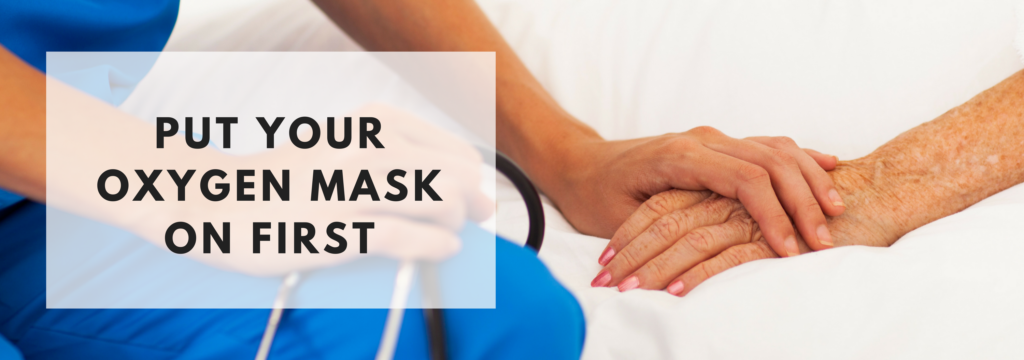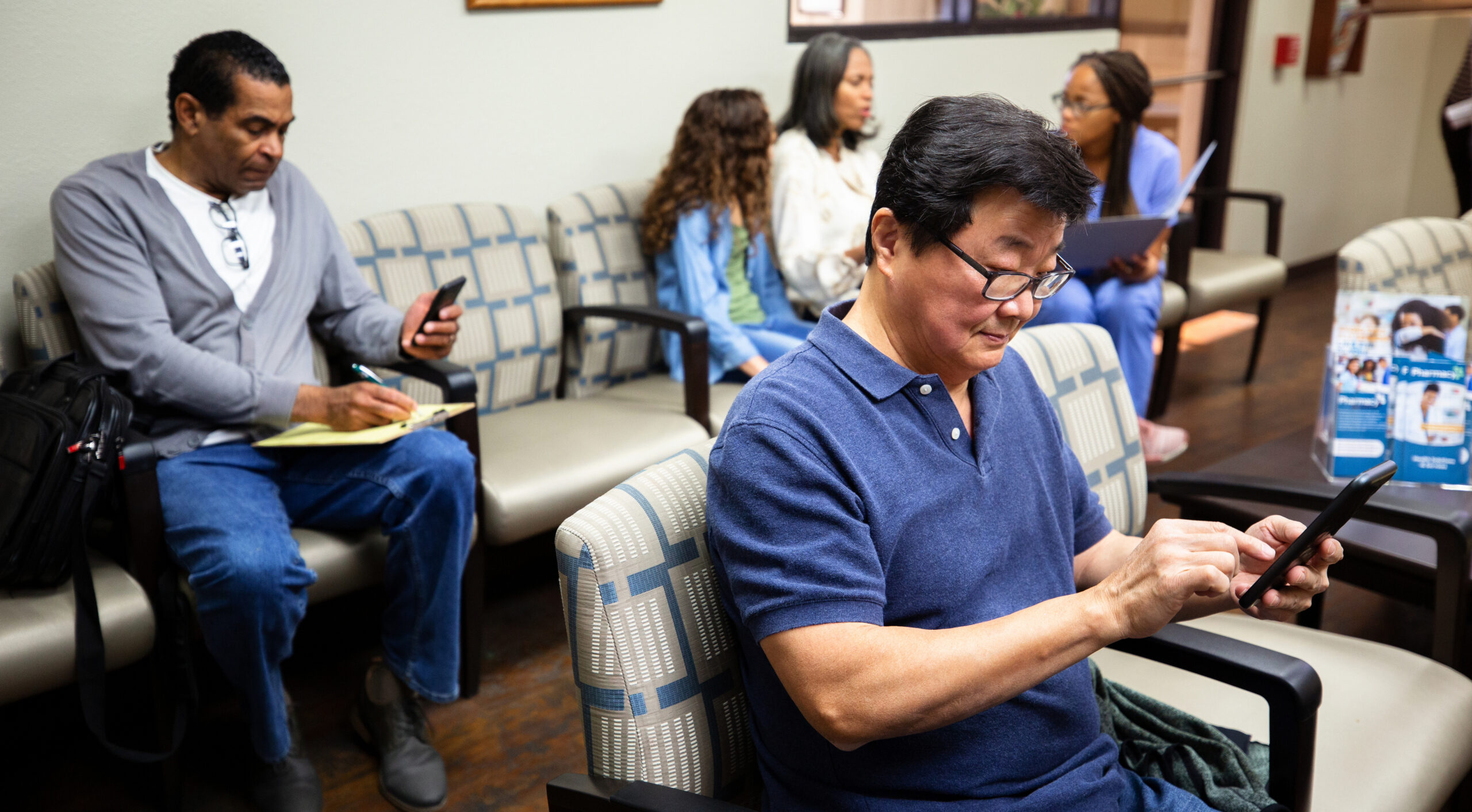Every flight starts with the standard three-minute safety demonstration, complete with seatbelt and life vest props. During the demonstration, flight attendants inform passengers that in the event of a sudden decrease in air cabin pressure, oxygen masks will drop from the ceiling. Flight attendants explicitly instruct passengers to put their own oxygen masks on first, prior to assisting others. These safety instructions provide an important lesson for all individuals in helping professions: in order to help others, you need to take care of yourself first.
In my experience, most healthcare professionals pursue healthcare as a career to help others. To provide the highest quality of patient care, we must also care for ourselves and our peers. Attaining joy in our work is necessary to ensure optimal patient outcomes.
Prioritize Self-Care to Achieve the Quadruple Aim
In 2007, the Institute for Healthcare Improvement (IHI) developed the Triple Aim framework to support healthcare organizations in navigating the shift from reactive healthcare to the proactive improvement of health for individuals and populations. Since then, the Triple Aim has been expanded into the Quadruple Aim, as many healthcare organizations have identified restoring joy in the workplace as a prerequisite to enhance the experience of care for individuals, improve the health of populations, and reduce the per capita cost of healthcare. In fact, the President of the IHI recently shared, “Staff are much more likely to be enthusiastic and positive about securing the best outcomes for patients when they feel supported, empowered, and respected.”
According to a recent Discussion Paper published by the National Academy of Medicine, burnout is characterized by “…a high degree of emotional exhaustion and high depersonalization, and a low sense of personal accomplishment from work.” Due to significant changes in how care is provided, documented, and reimbursed, the evolving healthcare environment is a major contributor to burnout. Healthcare professionals experiencing burnout adopt attitudes that lead to lack of engagement and loss of connection at work. They may feel that patients are asking unreasonable requests, team members do not listen to their concerns, and their place of employment does not care about their experiences. As such, the National Academy of Medicine identifies burnout among healthcare professionals as a threat to safe, high-quality patient care.
Leverage Proven Strategies to Reduce Burnout
As healthcare professionals, what can we do to ensure that we feel supported, empowered, and respected? As current and future healthcare leaders, how can we take better care of ourselves and our colleagues as part of our organizational commitment to the Quadruple Aim?
The Green Cross Academy of Traumatology developed Standards of Self-Care Guidelines in recognition that only those that first care for themselves can provide the highest quality of care for others. As an ethical principle, the Academy maintains, “…the duty to perform as a helper cannot be fulfilled if there is not, at the same time, a duty to self care.”
The University of Buffalo School of Social Work provides a number of resources for self-care, including a Self-Care Starter Kit developed by Lisa Butler, PhD. Although there is no one-size-fits-all approach to self-care, important elements include managing and reducing stress, taking care of physical health, honoring emotional and spiritual needs, nurturing relationships, and finding balance in personal and work life. According to Butler, “…each person needs to identify what they value and need as part of day-to-day life (maintenance self-care), and also identify the strategies they can employ if and when they face a crisis along the way (emergency self-care).” For some, this may mean that we need to seek, find, and remember appreciation from our supervisors and clients. For others, it may mean physically exercising regularly, enjoying the outdoors, and engaging in self-reflection.
As healthcare leaders, take the opportunity to conduct proactive rounds on front-line staff at all levels of the organization. Both formal and informal check-ins are a great way to ensure that your team members connect to their day-to-day work and have the adequate resources to take care of themselves and their patients. Recognizing the achievements of your colleagues can go a long way towards reinforcing what is important and boosting morale.
To achieve the Quadruple Aim, staff must perform at their very best every day. By developing self-care strategies that include expressing and experiencing gratitude, healthcare professionals can become more proactive in the prevention of burnout. As we celebrate Patient Experience Week, take a moment to review your own self-care plan. For your own well-being and that of your patients, you will be grateful that you paused, took a breath, and reflected upon your role in providing the best possible experiences for all patients.
To learn more about how healthcare organizations can improve the patient experience across the continuum of care, we recommend these resources:








